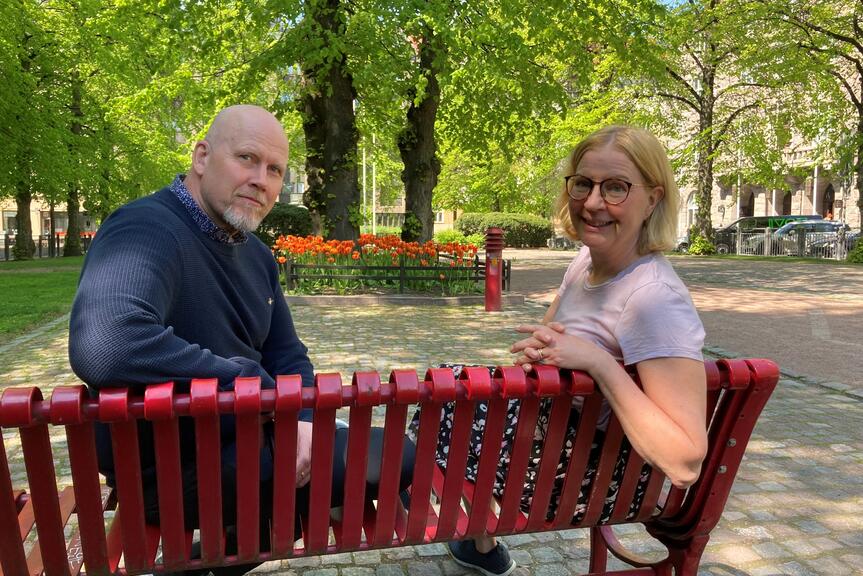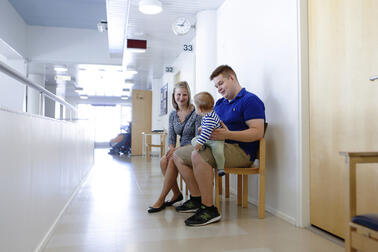
To cut a long story short, this was the starting point for developing health and social services to increasingly support the well-being of children, young people and families with children. In risk prevention work, the central phenomena were the mental health of children and young people and intimate partner violence, intoxicants and addictions in families with children.
According to Project Manager Marjo Alatalo, another starting point for the development was understanding that there is room for development in responding to service needs.
“We have needed to significantly strengthen research-based competence, clarify the cooperation between different professionals and launch new services – or strengthen the existing ones,” she says.
In order to achieve this, the professionals' work was facilitated by modelling and describing a seamless single service chain.
“It helps professionals see the previously made agreements on cooperation and what each professional's role in the service chain is,” Alatalo says.
Project Manager Jarmo Lonkola is pleased to mention how all the city's divisions, as well as HUS child psychiatry and HUS youth psychiatry, have been involved in the joint development.
They both say that the development and strengthening of services and expertise will also ensure that children and young people will neither fall between silos nor be bounced around and stuck on waiting lists.
Alatalo admits that waiting lists will not disappear and operating models will not miraculously become perfect. Improvements are being made, however, at rapid pace.
Important tools for professionals
In order to make services more watertight and prevention work more effective, it was first necessary to map out the most important support and treatment needs. It has also been important to determine how professionals working with children, young people and families could learn to identify the kind and level of support their clients need.
The service paths had to be developed to meet the needs. To illustrate the situation and to help professionals see when the client needs extra support from other professionals, an illustrative set of steps was created.
Lonkola and Alatalo emphasise that there already were solid skills and tools for helping children, young people and families, even before the development of the new service chain. But now, with the help of co-creation, it has been possible to fill gaps in the services and to ensure functional cooperation.
Competence is systematically developed further not only through training, but also by implementing tools to help bringing up topics of concern and identifying issues.
One such tool is the Safety10 tool, which is a very effective tool used in school health care to bring up topics of insecurity.
Lonkola mentions that families in early support can also use self-care services. There are online services, such as those that can be found on the website Mielenterveystalo.fi that can be used to support discussions with a professional.
Improved quality of life and cost savings
One of the aims of developing the service chain has also been ensuring support for professionals. If the skill set of or the tools available to a professional are not sufficient to support a child, young person or family they are meeting with, it is good for them to know whom to ask for advice or where to refer the child, young person or family, so that the treatment pathway is not obstructed right at the beginning – and to ensure smooth transition from one service to another.
No one wants a situation where it is unclear who is responsible for helping, for example, a young person in need of support. One of the goals of developing mental health services is for the client and professional to know at all times who is responsible for the client's service process.
Alatalo and Lonkola say that although the term “service chain development” may sound like consultant jargon, it has not been a complicated web of separate, non-interactive projects but actual, everyday development of operations that includes funding and resources.
Continuous development helps to provide smoother, high-quality services to Helsinki residents but, at the same time, it saves money.
By being able to react proactively to situations, the quality of life of children, young people and families improves and the most intensive treatments are not required. Anticipation also helps to prevent the social marginalisation of young people.
The development of the mental health service chain for children and young people aims to:
- take into account the prevention of social marginalisation and promotion of well-being and health in all activities and services
- ensure the continuity of services and that clients receive all the basic level health and social services they need smoothly and in a timely manner
- strengthen Helsinki’s own basic-level mental health and substance abuse services provided at a low-threshold for children and young people
- secure child welfare and child and adolescent psychiatry outreach support to avoid anyone falling through the cracks
- strengthen the role of schools and educational institutions in identifying the mental health needs of children and young people and in low-threshold care and
- create a single service chain model with steps for professionals.
Text and photo: Kirsi Riipinen


